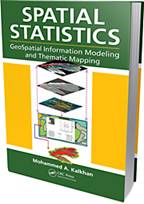 |
(CRC Press: Boca Raton, FL) -- Geospatial information modeling and mapping has become an important tool for investigating and managing natural resources at the landscape scale. Spatial Statistics: GeoSpatial Information Modeling and Thematic Mapping, by Mohammed A. Kalkhan, Ph.D. (CRC Press, 2011) reviews the types and applications of geospatial information data, such as remote sensing, geographic information systems (GIS), and the Global Positioning System (GPS) as well as their integration into landscape-scale geospatial statistical models and maps. The book explores how to extract information from remotely sensed imagery, GIS, and GPS, and how to combine this with field data—vegetation, soil, and environmental—to produce a spatial model that can be reconstructed and displayed using GIS software. Readers learn the requirements and limitations of each geospatial modeling and mapping tool.
…
Add new comment